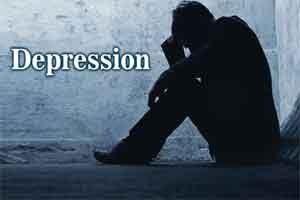- Home
- Editorial
- News
- Practice Guidelines
- Anesthesiology Guidelines
- Cancer Guidelines
- Cardiac Sciences Guidelines
- Critical Care Guidelines
- Dentistry Guidelines
- Dermatology Guidelines
- Diabetes and Endo Guidelines
- Diagnostics Guidelines
- ENT Guidelines
- Featured Practice Guidelines
- Gastroenterology Guidelines
- Geriatrics Guidelines
- Medicine Guidelines
- Nephrology Guidelines
- Neurosciences Guidelines
- Obs and Gynae Guidelines
- Ophthalmology Guidelines
- Orthopaedics Guidelines
- Paediatrics Guidelines
- Psychiatry Guidelines
- Pulmonology Guidelines
- Radiology Guidelines
- Surgery Guidelines
- Urology Guidelines
Brain stimulation may reduce suicidal tendency in depression

Bilateral repetitive transcranial magnetic stimulation (rTMS), a type of brain stimulation, is effective in reduction of suicidal thinking in about 40% of people with hard-to-treat depression, according to a new study published in The Journal of Clinical Psychiatry.
The study was conducted by Jeff Daskalakis, Co-Director of the Temerty Centre for Therapeutic Brain Intervention, and colleagues, to evaluate the effects of rTMS on suicidal ideation in patients with treatment-resistant major depression (TRD).
Suicidal thinking can occur in several mental illnesses, including post-traumatic stress disorder, bipolar disorder, schizophrenia and borderline personality disorder. It's estimated that about 90 percent of people who die by suicide have a mental illness. The findings give a hope of preventing suicides in patients with TRD or other mental illnesses. rTMS is a non-invasive form of brain stimulation that directs magnetic pulses at a targeted area of the brain.
Treatment-resistant depression is a condition wherein even after taking at least two different antidepressant medications, the patients do not experience a noticeable improvement in their symptoms. Up to 40 percent of people with depression are treatment resistant. Earlier, Centre for Addiction and Mental Health (CAMH) studies have shown rTMS to be an effective therapy for treatment-resistant depression. For the present study, the researchers analyzed data from two earlier CAMH studies on rTMS given to people with treatment-resistant depression.
Participants were randomized to receive rTMS in one of three ways: to both the right and left frontal lobes (bilateral rTMS), the left frontal lobe only (unilateral rTMS) or, as a comparison group, sham rTMS, which is similar to a placebo.
"This is one of the first large studies showing rTMS is effective in treating suicidal ideation," says Dr. Daskalakis. "The effects on suicidal ideation were independent of effects on depressive symptoms."
For analyzing the effectivity of rTMS in suicide prevention, the researchers pooled data from 2 published prospective randomized controlled trials of rTMS applied to the dorsolateral prefrontal cortex in patients with TRD. And then, the effect of bilateral left unilateral, and sham rTMS on suicidal ideation as measured by the suicide item of the 17-item Hamilton Depression Rating Scale (HDRS), were compared.
Based on the study, following inferences were made:
- Suicidal ideation resolved in 40.4%, 26.8%, and 18.8% of participants randomized to bilateral, left unilateral, and sham rTMS, respectively.
- The difference between bilateral and sham was significant, unlike the difference between left unilateral and sham.
- There was a modest correlation between change in suicidal ideation and change in depression severity and no difference in change of HDRS-16 score between suicide remitters and nonremitters.
"One of the only effective treatments for suicidal ideation is electroconvulsive therapy or ECT," says Dr. Daskalakis. "While ECT is the most effective treatment in psychiatric care, it's rarely used, because of high stigma and adverse cognitive side effects associated with the treatment. Less than one percent of patients with hard-to-treat, or treatment-resistant, depression get ECT."
While left unilateral rTMS is the most common type, the findings suggest that targeting the right frontal lobe may be key to treating suicidal thinking, says Dr. Weissman, first author of the study. Earlier research in people with depression and suicidal ideation has shown that this brain region may be linked with impulsivity and difficulties with regulating emotions. In future studies, the researchers plan to zero in on the right frontal lobe.
"Bilateral rTMS was superior to sham rTMS in reducing suicidal ideation in patients with TRD. Only a small portion of the reduction in suicidal ideation was attributable to the reduction in depressive symptoms," concluded the authors. These data suggest that suicidal ideation could be a specific target symptom construct for rTMS.
For further information click on the link: http://dx.doi.org/10.4088/JCP.17m11692

Disclaimer: This site is primarily intended for healthcare professionals. Any content/information on this website does not replace the advice of medical and/or health professionals and should not be construed as medical/diagnostic advice/endorsement or prescription. Use of this site is subject to our terms of use, privacy policy, advertisement policy. © 2020 Minerva Medical Treatment Pvt Ltd